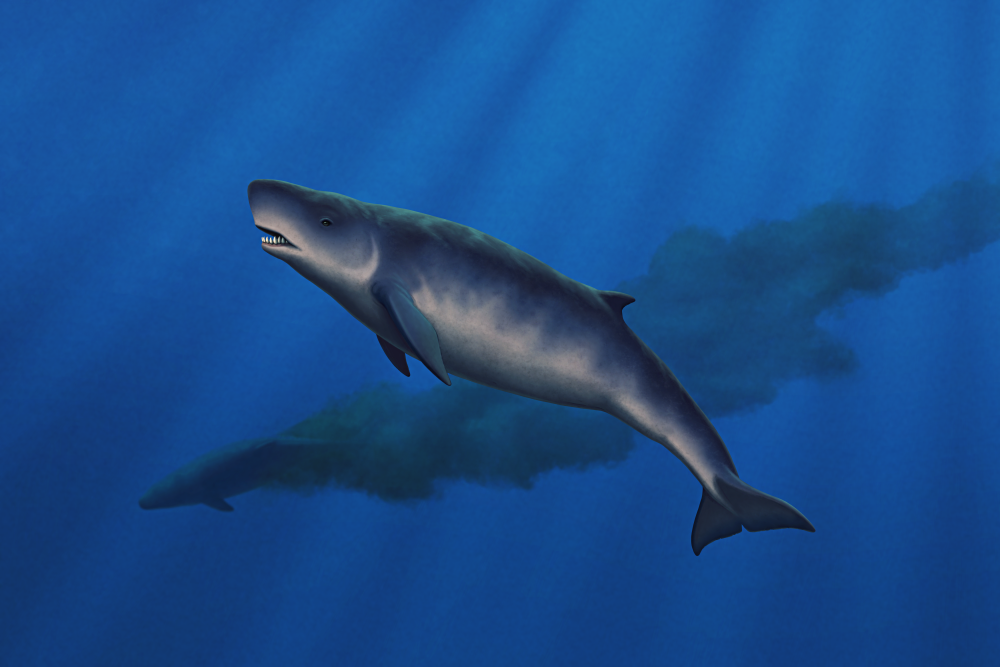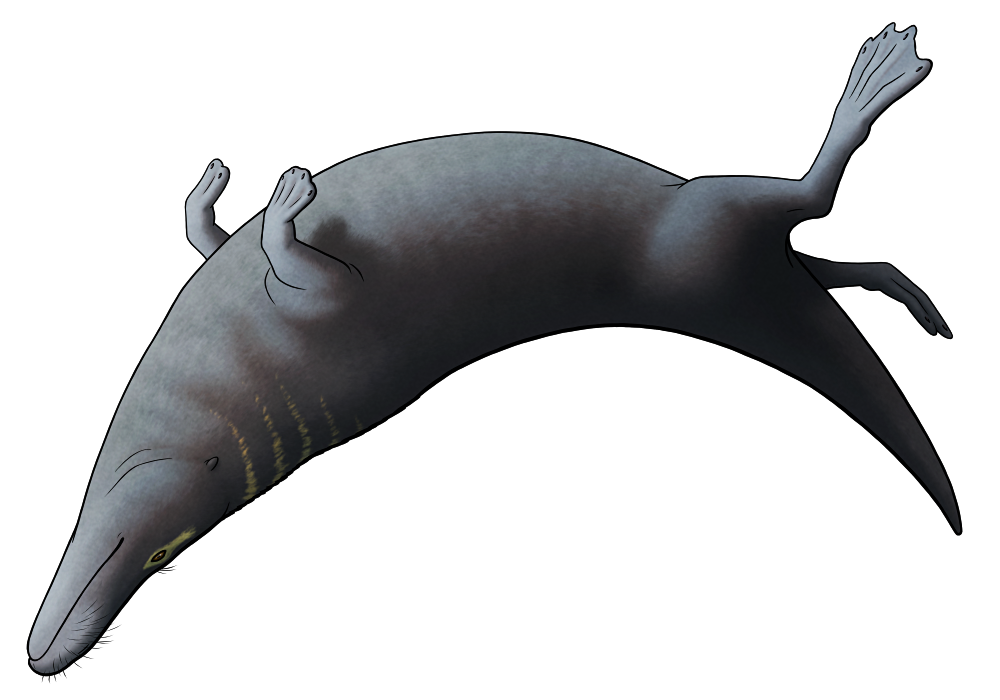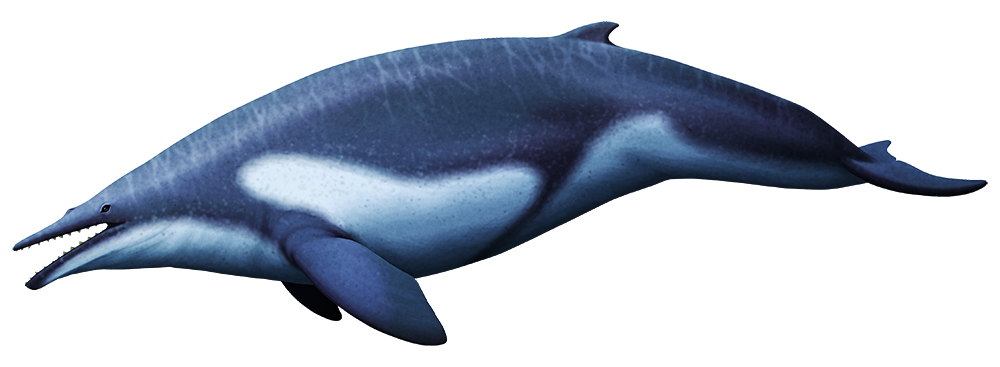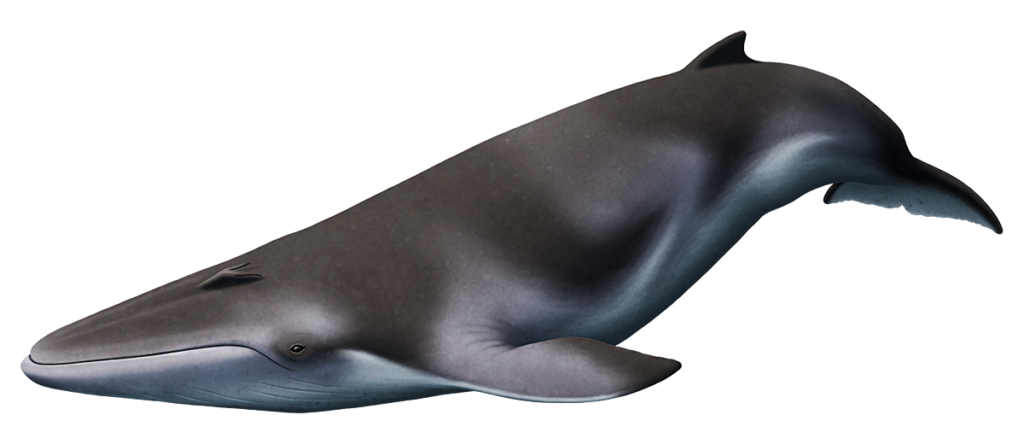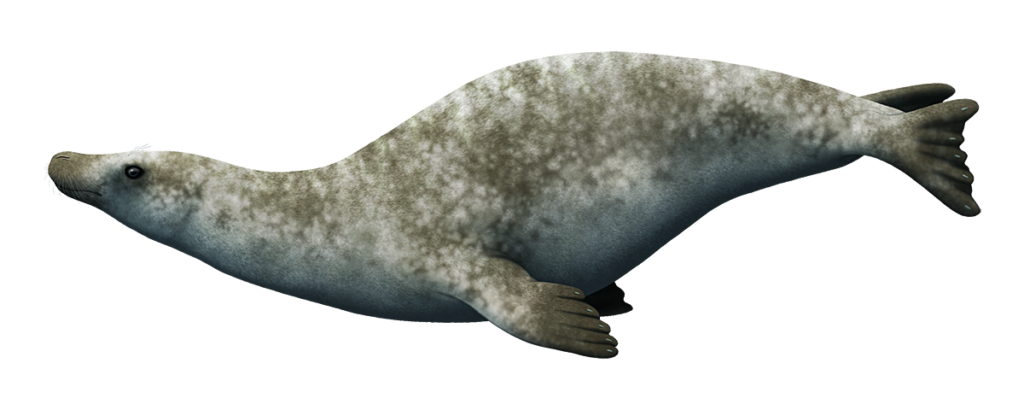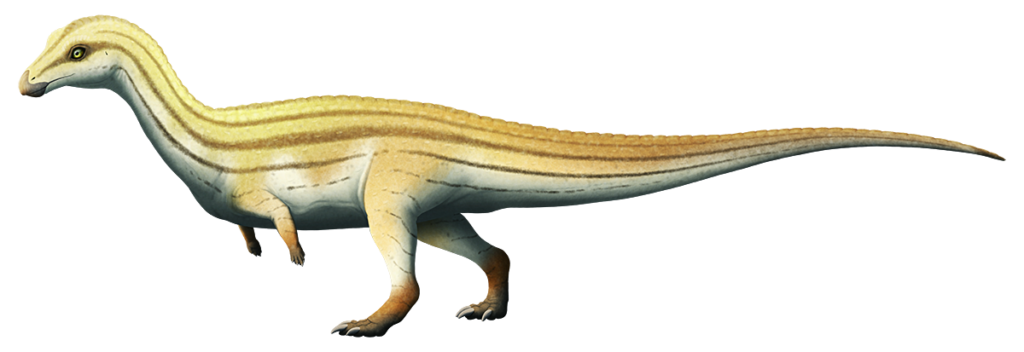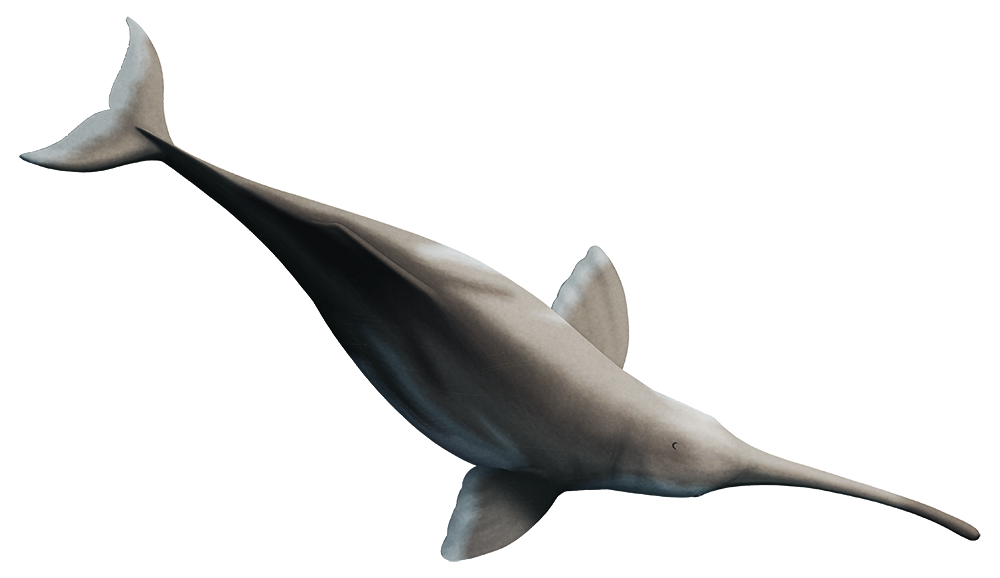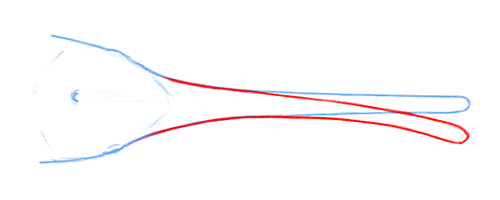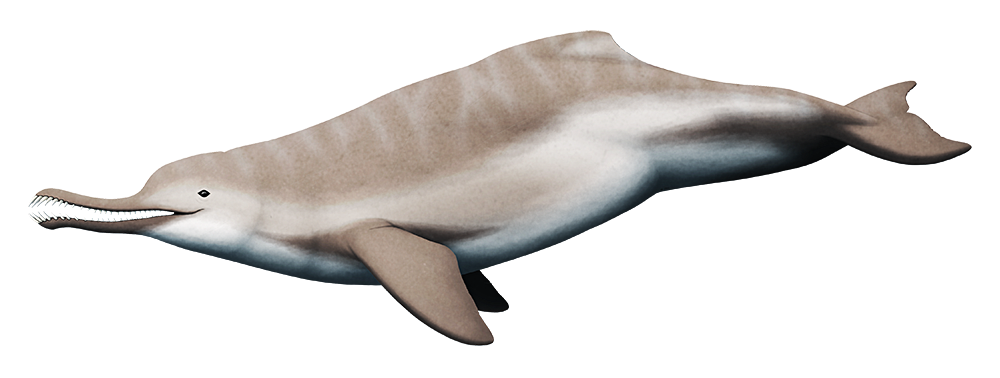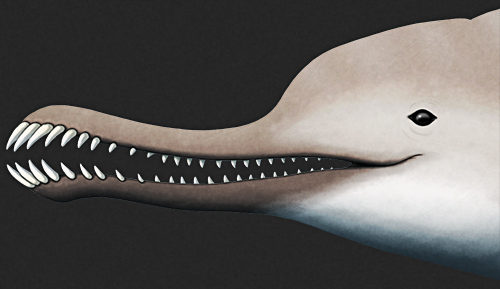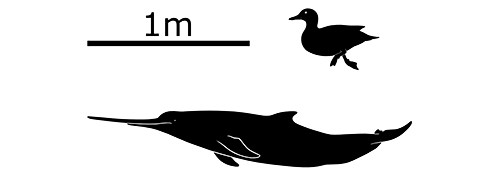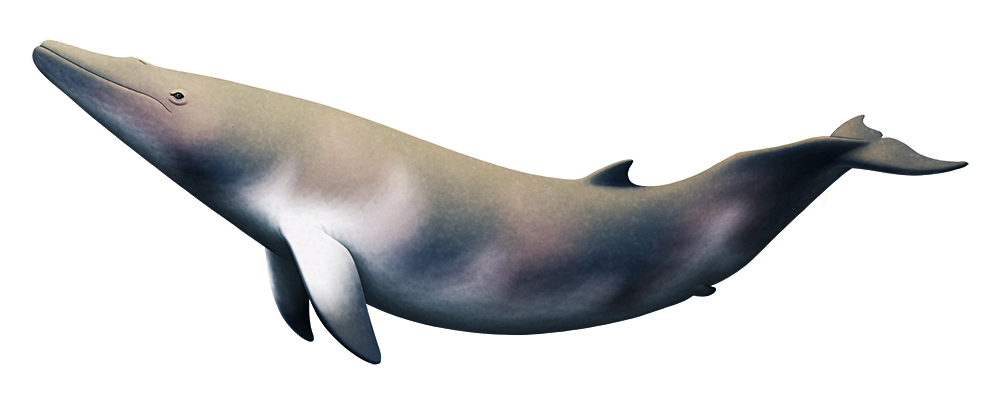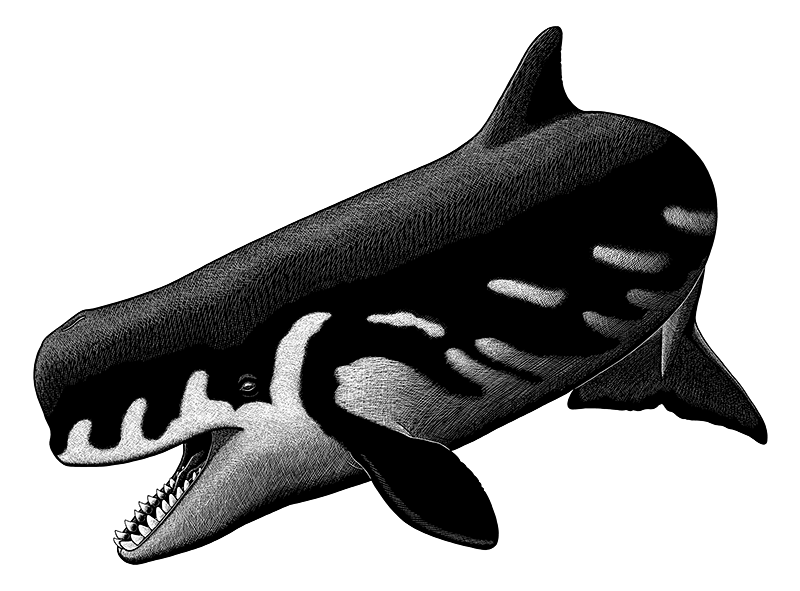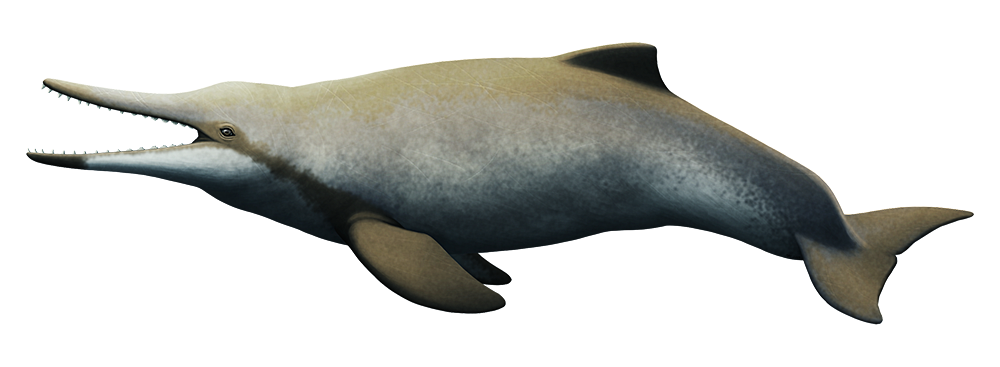Kogiopsis floridana was a physeteroid whale that lived near the coast of the southeastern United States from the mid-Miocene to the early Pliocene, about 14-4 million years ago.
Known just from fossilized lower jaws and teeth, with some teeth up to nearly 13cm long (~5″), its full life appearance and size are uncertain – but it may have been slightly larger than a modern bottlenose dolphin at around 4.5m long (~14’9″). It’s traditionally been considered to be part of the kogiid family, closely related to modern pygmy and dwarf sperm whales, but some studies disagree with that classification and instead place it in the true sperm whale lineage.
It was probably a predator in a similar ecological role to modern orcas, adapted for hunting prey like squid, fish, and smaller marine mammals. But unlike orcas it wouldn’t have been the apex predator of its ecosystem, subject to predation pressure by even larger carnivores like macroraptorial sperm whales and everyone’s favorite ridiculously huge shark – and as a result it probably had a “live fast and die young” lifestyle similar to modern kogiids and other small-to-medium-sized Miocene physeteroids, rapidly maturing and only living to around 20 years old.
I’ve reconstructed Kogiopsis here as a kogiid-like animal, with a similar sort of shark-like head shape and “false gill” markings. In the background a second individual is depicted displaying “inking” behavior, releasing a defensive cloud of reddish-brown fluid from a specialized sac in its colon.

